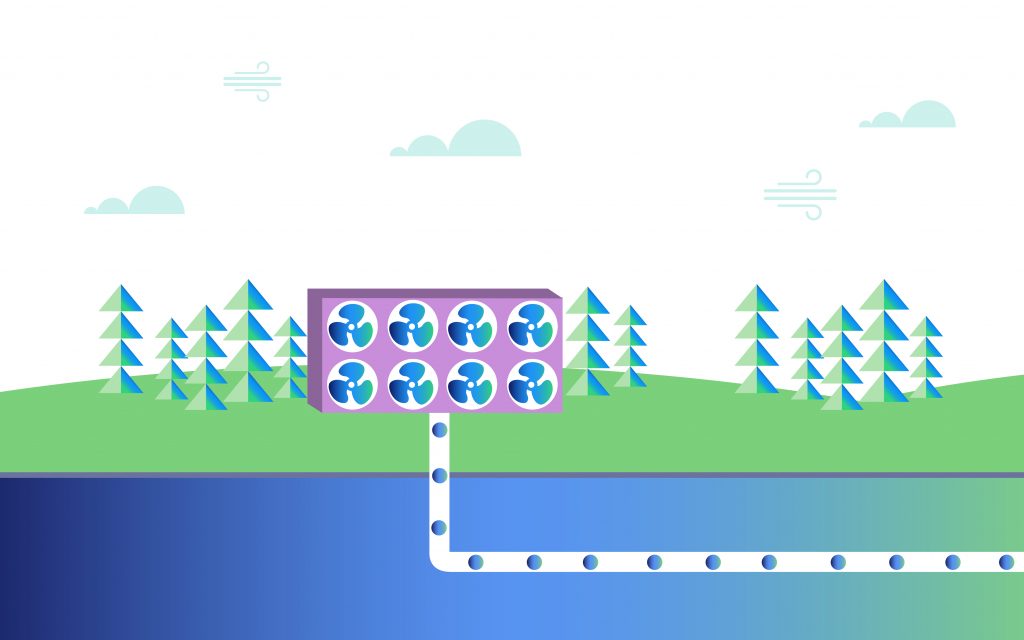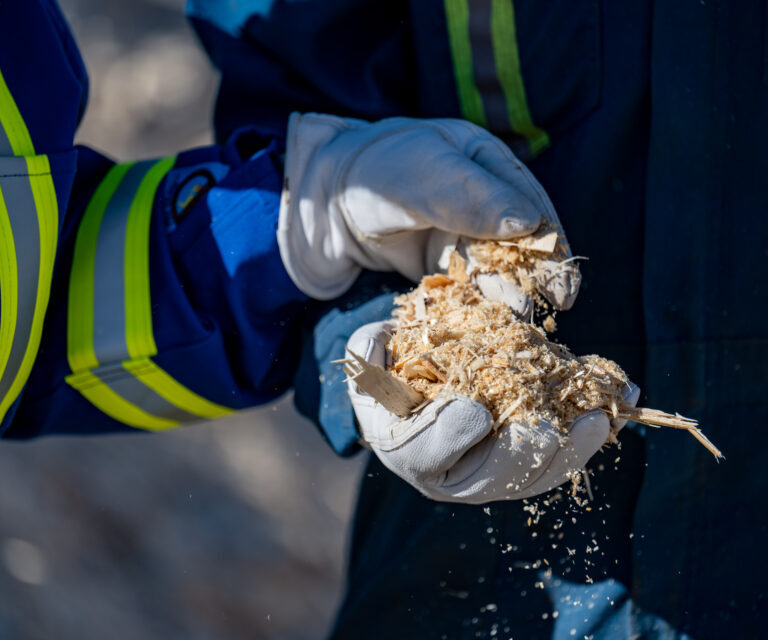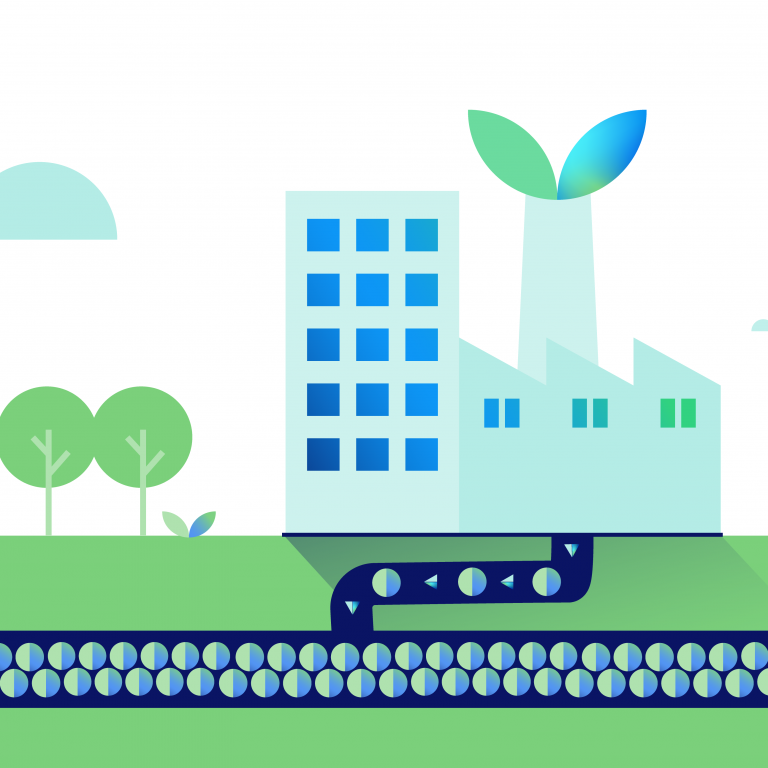What is direct air carbon capture and storage (DACS)?
Direct air carbon capture and storage (DACS, sometimes referred to as DAC or DACCS) is one of the few technologies that can remove carbon dioxide (CO2) from the atmosphere. Unlike other carbon removal technologies that capture CO2 emissions during the process of generating electricity or heat, DACS can be deployed anywhere in the world it can tap into a supply of electricity.
CO2 removal is crucial to meeting the international climate goals set by the 2015 Paris Agreement. But it’s not enough just to cut CO2 emissions, to achieve net zero, it will also be necessary to remove the CO2 that two centuries of industrialisation have released into the environment. As a technology that removes more CO2 from the atmosphere than it releases – assuming it is powered by green electricity – DACS has the potential to play a key role in this process.

How does DACS work?
DACS could be described as a form of industrial photosynthesis. Just as plants use photosynthesis to convert sunlight and CO2 into sugar, DACS systems use electricity to remove CO2 from the atmosphere using fans and filters.
Air is drawn into the DACS system using an industrial scale fan. Liquid DACS systems pass the air through a chemical solution which removes the CO2 and returns the rest of the air back into the atmosphere.
Solid DACS systems captures CO2 on the surface of a filter covered in a chemical agent, where it then forms a compound. The new compound is heated, releasing the CO2 to be captured and separating it from the chemical agent, which can then be recycled.
The captured CO2 can then be compressed under very high pressure and pumped via pipelines into deep geological formations. This permanent storage process is known as ‘sequestration’.
Alternatively, the CO2 can be pumped under low pressure for immediate use in commercial processes, such as carbonating drinks or cement manufacturing.
A 2021 study by the Coalition for Negative Emissions shows that DACS could provide at least 1Gt of sustainable negative emissions by 2025
DACS fast facts
- Human activities have raised atmospheric concentrations of CO2 by 48% above pre-industrial levels found in 1850.
- During prehistoric ice ages, CO2 levels were around 200 parts per million (ppm). The average level in 2020 was more than 417ppm.
- 101 out of 116 of the IPCC scenarios mitigating greenhouse gas emissions depend on using negative emissions technology, including DACS.
What role can DACS play in decarbonisation?
CO2 is in the air at the same concentration everywhere in the world. This means that DACS plants can be located anywhere, unlike carbon capture systems that remove CO2 from industrial processes at source.
There are 15 DACS plants currently in operation worldwide – Climeworks operates three in Switzerland, Iceland and Italy. Together, these small-scale plants capture approximately 9,000 tonnes of CO2 per annum. The first large-scale plant, currently being developed in the Permian Basin, Texas, is expected to capture 1,000,000 tonnes (one megatonne) per annum when it becomes operational in 2025.
At just 0.04%, the concentration of CO2 in the atmosphere is very dilute which makes removing and storing it a challenge. This means that DACS costs significantly more than some other CO2 capture technologies – between $200 and $600 (£156-468) per metric tonne. The process also requires large amounts of energy, which adds to the demand for electricity.
However, DACS has the potential to become an important piece in the jigsaw of CO2 removal technologies and techniques that includes nature-based solutions such as planting forests, along with bioenergy with carbon capture and storage (BECCS), soil sequestration and ‘blue carbon’ marine initiatives.
Go deeper
- Five projects that prove carbon capture has come of age
- Harnessing the power of nature and technology to reach net zero using negative emissions
- CCS or carbon capture and storage in a nutshell
- Remove emissions. Repair environments. Restart economies. Find out about the Coalition for Negative Emissions.



















